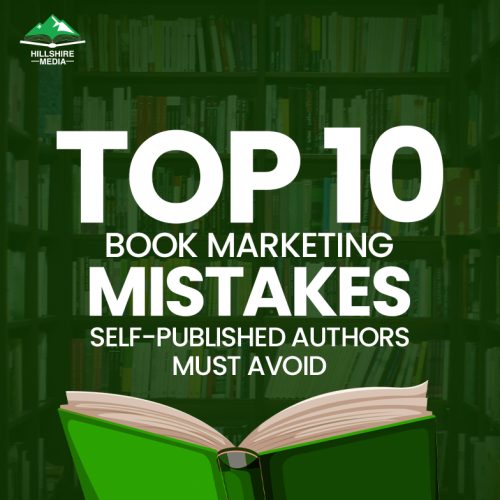Introduction
In 2025, English-to-Spanish translation is an essential strategy for authors, coaches, and publishers who want to expand their readership and revenue. With over 500 million native Spanish speakers worldwide and growing digital access across Latin America, Spain, and the US Hispanic market, translating your book can unlock a significant new audience. The hurdle for many writers is cost and quality: good translations require skilled linguists and careful cultural adaptation.
This guide helps you translate a book into Spanish affordably and professionally. We list ten vetted providers that balance price, speed, and quality. Each option suits different needs—some prioritize low upfront cost, others prioritize literary fidelity. Whether you need translation services for authors or want to partner with established literary translation companies, these providers will help you publish a book in Spanish that reads naturally to native readers.
Why Translate Your Book into Spanish in 2025?
- 500M+ Spanish-speaking readers worldwide and growing internet penetration.
- Latin American and US-Hispanic book markets are expanding faster than many expect.
- Self-published Spanish titles outperform English books in several nonfiction niches.
- Translating increases long-term royalties and extends a title’s lifecycle.
Translating is also a brand-building move. An entrepreneur or coach who publishes a book in Spanish gains credibility in new markets and can connect with readers through translated newsletters, workshops, and localized marketing.
What Makes a Great Translation Provider?
Key Criteria
- Native Spanish linguists who understand regional variants and idioms.
- Experience with books, not just websites or marketing copy—literary nuance matters.
- Transparent, affordable book translation pricing with clear deliverables.
- Fast and reliable turnaround time to meet launch schedules.
- Additional services like formatting, cover adaptation, and distribution help you publish faster.
Look for providers who offer sample translations and a dedicated editor or proofreader. This is especially important if your work contains dialect, humor, or culturally specific references.
Top 10 Affordable English to Spanish Translation Providers (2025)
Below are ten options that suit a range of budgets and goals, from royalty-share platforms to professional agencies.
1. Hillshire Media (Best for Authors & Entrepreneurs)
- Specializes in books and translation services for authors.
- Offers ghostwriting, editing, design, and complete formatting.
- Human editors preserve tone and voice.
- Transparent pricing and authors retain 100% of royalties.
- Ideal for authors who want a single partner for translation and publishing.
2. Babelcube
- Royalty-share model—no upfront fee to translate.
- Translators earn a share of sales, reducing initial cost.
- Suitable for fiction and memoir writers who can accept longer ROI timelines.
- Use when the upfront budget is limited and you seek a partner willing to invest effort.
3. Day Translations
- ISO-certified agency with strong quality controls.
- Handles books, scripts, and complex nonfiction.
- Offers native proofreading and project management.
- Suited for authors who need agency-level reliability and traceable QA.
4. Tomedes
- Competitive rates and a dedicated project manager.
- Scales well for long manuscripts and tight deadlines.
- Offers optional proofreading and formatting add-ons.
- Suitable for technical and business books with firm launch dates.
5. Fiverr (Top-Rated Freelancers)
- Marketplace with many Spanish book translators at various price points.
- Start small with paid samples and short tests.
- Lower-cost options as low as $100 for short texts.
- This is best when you have time to vet candidates and manage the workflow yourself.
6. Upwork (Freelance Translators)
- Post your project and invite proposals from qualified translators.
- Hire long-term or per-project based on niche expertise.
- Control the process directly and negotiate terms.
- Preferred by authors who value direct collaboration and bespoke service.
7. Gengo
- AI-assisted workflow with human review for speed and affordability.
- Ideal for marketing copy, short books, or early drafts.
- Not the top choice for a nuanced literary voice.
- Choose Gengo for rapid, budget-friendly drafts that will be refined later.
8. TranslateBooks.com
- Exclusively focused on book translation with per-word pricing.
- Includes editing and basic typesetting in packages.
- Streamlined process for indie authors who want a straightforward experience.
- Perfect when you want a predictable quote and quick turnaround.
9. Straker Translations
- Enterprise-level resources are available for indie authors.
- Strong localization services for Spain vs Latin America.
- Professional editing and market-specific adaptation.
- Excellent for business nonfiction that requires localized terminology.
10. ProZ.com (Freelancer Marketplace)
- A large community of professional linguists and literary translation companies.
- Use reputation, samples, and references to hire experienced teams.
- Option to contract translators and separate proofreaders for quality control.
- Ideal for authors who want to assemble a vetted, specialist team.
What’s the Cost of Translating a Book to Spanish in 2025?
Many authors ask, How much does translation cost? Prices vary by provider, language pair, and complexity.
- Freelancers: $0.05–$0.12 per word.
- Agencies: $0.10–$0.20 per word.
- Royalty-share: $0 upfront, share of future earnings.
Example: A 60,000-word novel at $0.08/word costs about $4,800. Expect additional fees for editing, formatting, and market localization—typically $200–$600 extra. If you opt for a hybrid model (AI draft + human editing), you can lower upfront costs while maintaining quality.
What to Avoid When Hiring a Translator
- Machine-only translations with no human review.
- Providers without book experience—web copy translators may miss literary nuance.
- Skipping a native Spanish proofreader; regional differences matter.
- Choosing the cheapest bidder without samples or references.
Always request a sample chapter and a clear contract outlining revisions, rights, and timelines.
How Hillshire Media Can Help You Translate & Publish in Spanish
Hillshire Media offers end-to-end support for authors who want to publish a book in Spanish:
- Native translators and experienced editors.
- Market-specific cover design and metadata optimization.
- Kindle and print-ready files, plus distribution assistance.
- Transparent pricing and full royalty rights for authors.
We streamline the process so you can focus on writing and promotion while professionals handle linguistic fidelity and technical publishing steps.
Practical Steps to Start Your Translation Project
Start with a clear, low-risk plan to control quality and budget:
- Request a sample translation (1–2 chapters) to check voice and accuracy.
- Create a glossary of names, terms, and preferred translations to ensure consistency.
- Choose a regional focus (Spain or Latin America) so localization matches your audience.
- Agree on milestones: sample review, complete translation, proofreading, and final formatting.
- Clarify rights, payment terms, and revision rounds before work begins.
Typical Timeline
A simple schedule helps you coordinate launch activities:
- Week 1: Select a provider and agree on the scope.
- Weeks 2–4: Translation of the manuscript (speed varies by length).
- Week 5: Proofreading and revisions.
- Week 6: Formatting, cover adaptation, and final QA.
Quick Case Example
A business author used a hybrid workflow—AI draft plus human editing—and translated a 40,000-word guide for about $2,100. Within three months, the Spanish edition generated new international speaking inquiries and grew monthly royalties. Today.
FAQ
Q: What’s the cheapest way to translate a book into Spanish?
A: Royalty-share platforms like Babelcube or hiring vetted freelancers on Fiverr/Upwork reduce upfront costs but require careful vetting.
Q: Can I use AI to translate my book?
A: AI can produce a draft quickly, but human editors are essential to preserve tone, cultural nuance, and readability, especially with literary translation companies handling final edits.
Q: How long does book translation take?
A: Typical timelines range from 2 to 8 weeks, depending on word count, complexity, and the provider’s capacity.
Final Thoughts
Choosing a reliable partner for English to Spanish translation can extend your readership and increase revenue with minimal extra marketing spend. Prioritize providers that combine affordable book translation with editorial rigor and market knowledge. Whether you select a freelance Spanish book translator, an agency, or a full literary translation company, plan carefully: budget, quality checks, and localization will determine your success.
Ready to bring your book to Spanish readers? Get a free quote from Hillshire Media and start your global author journey today.



